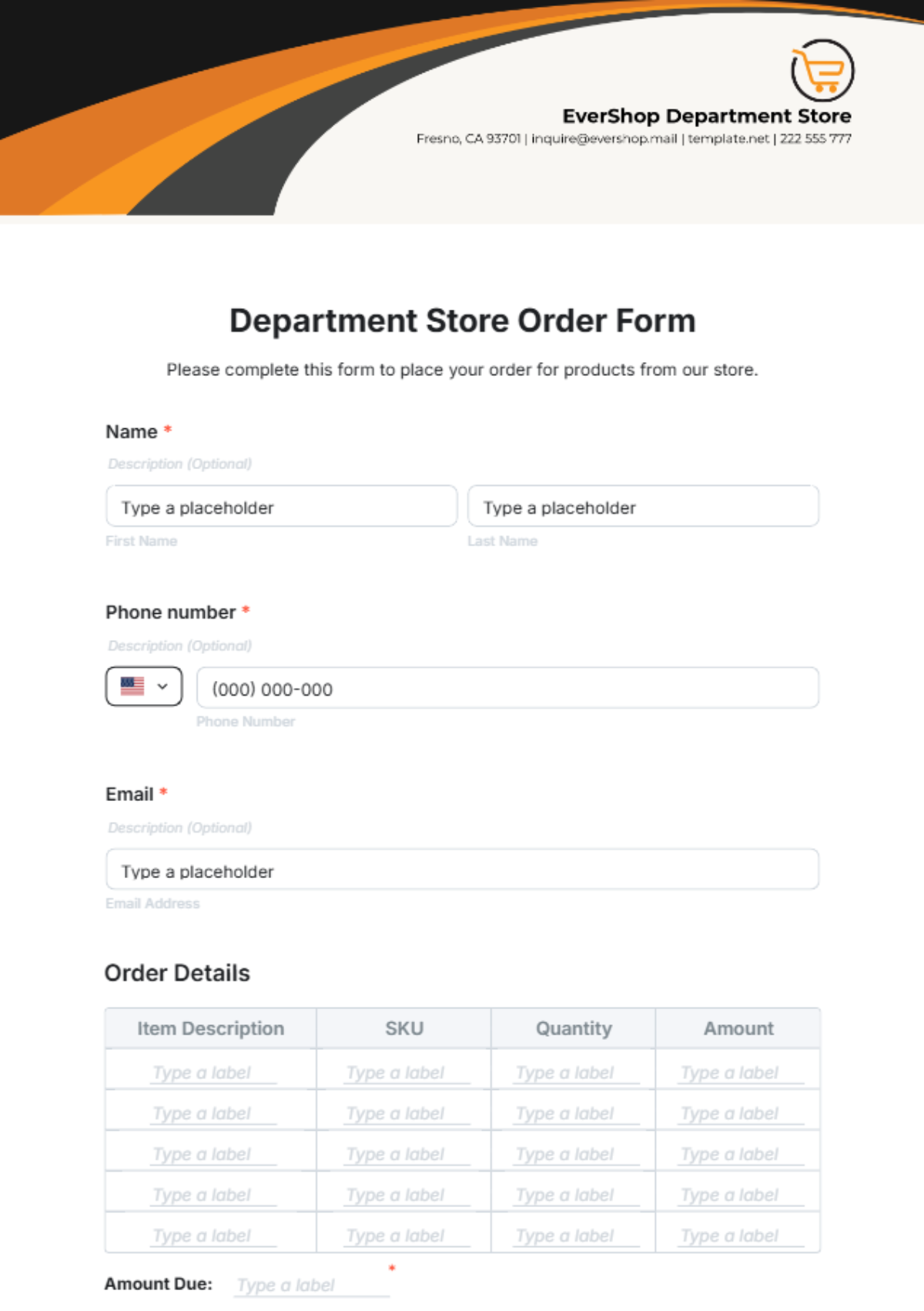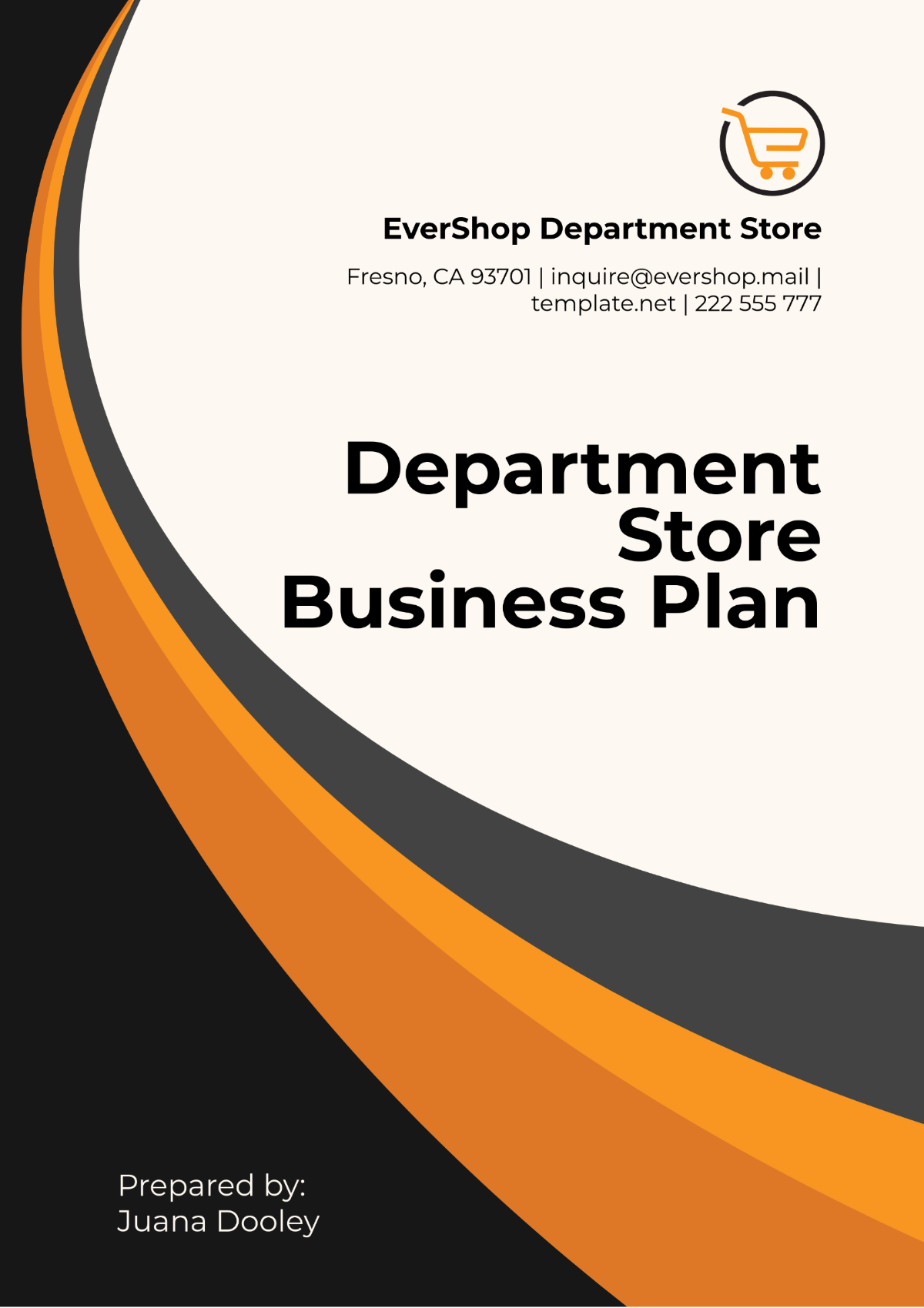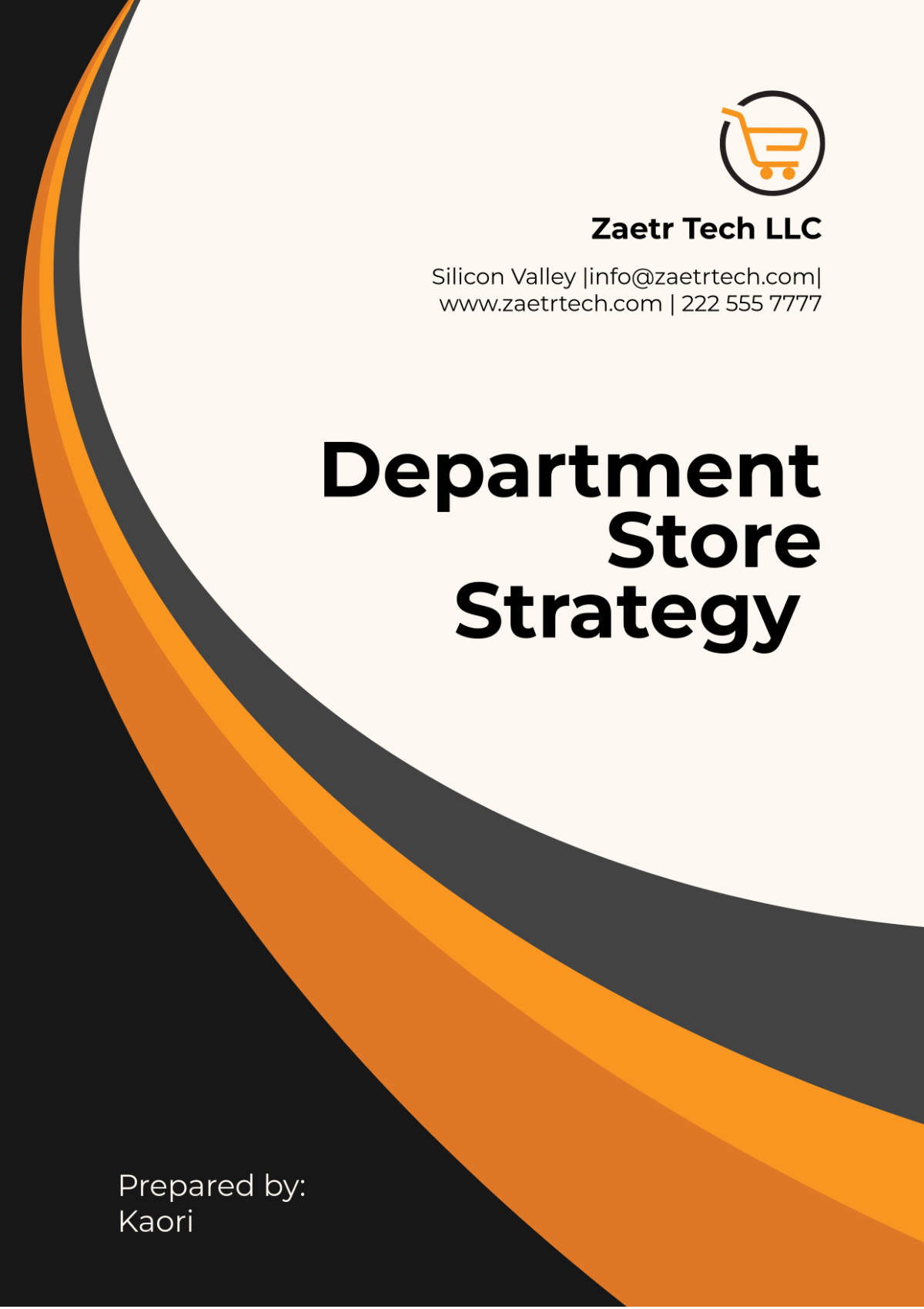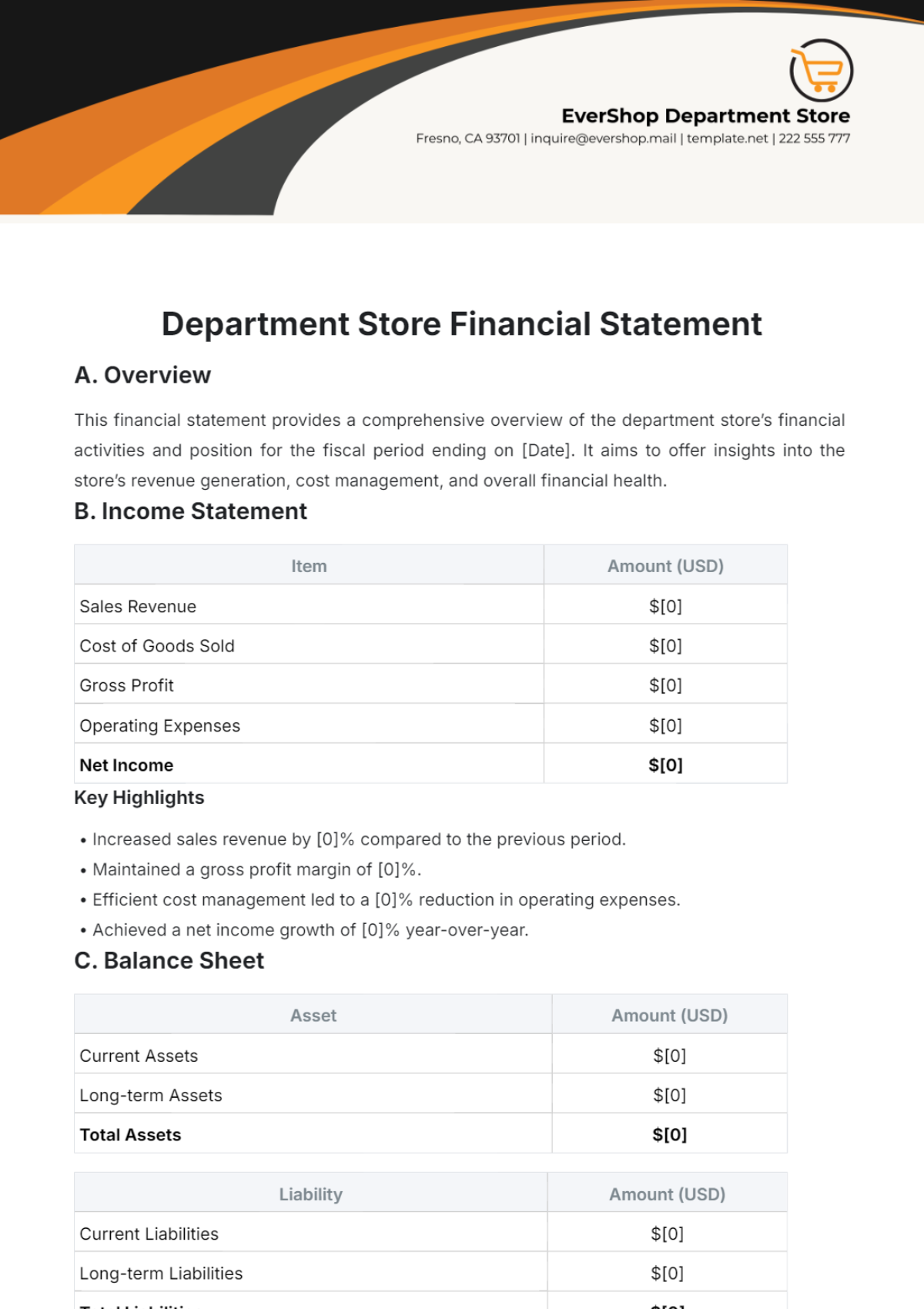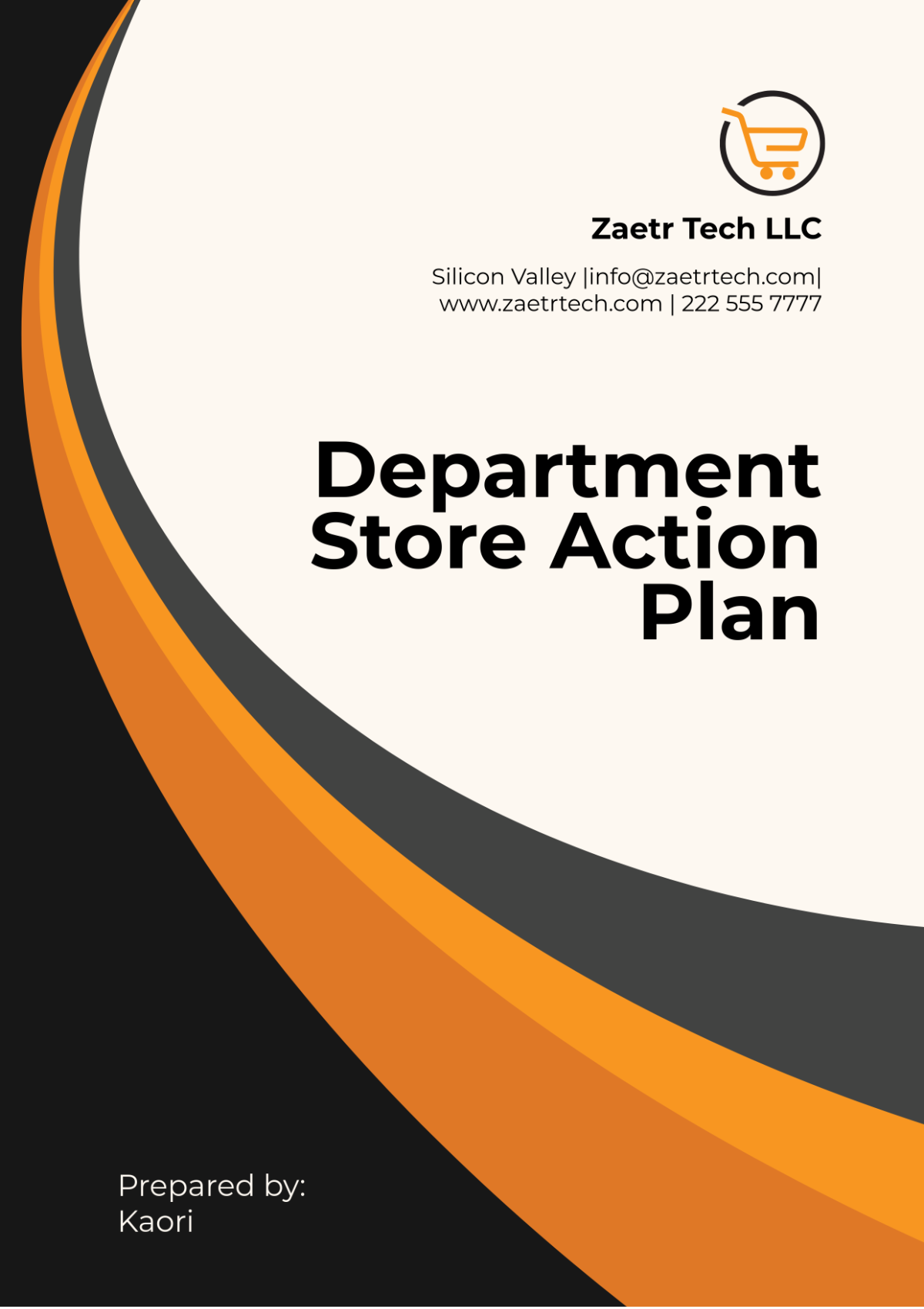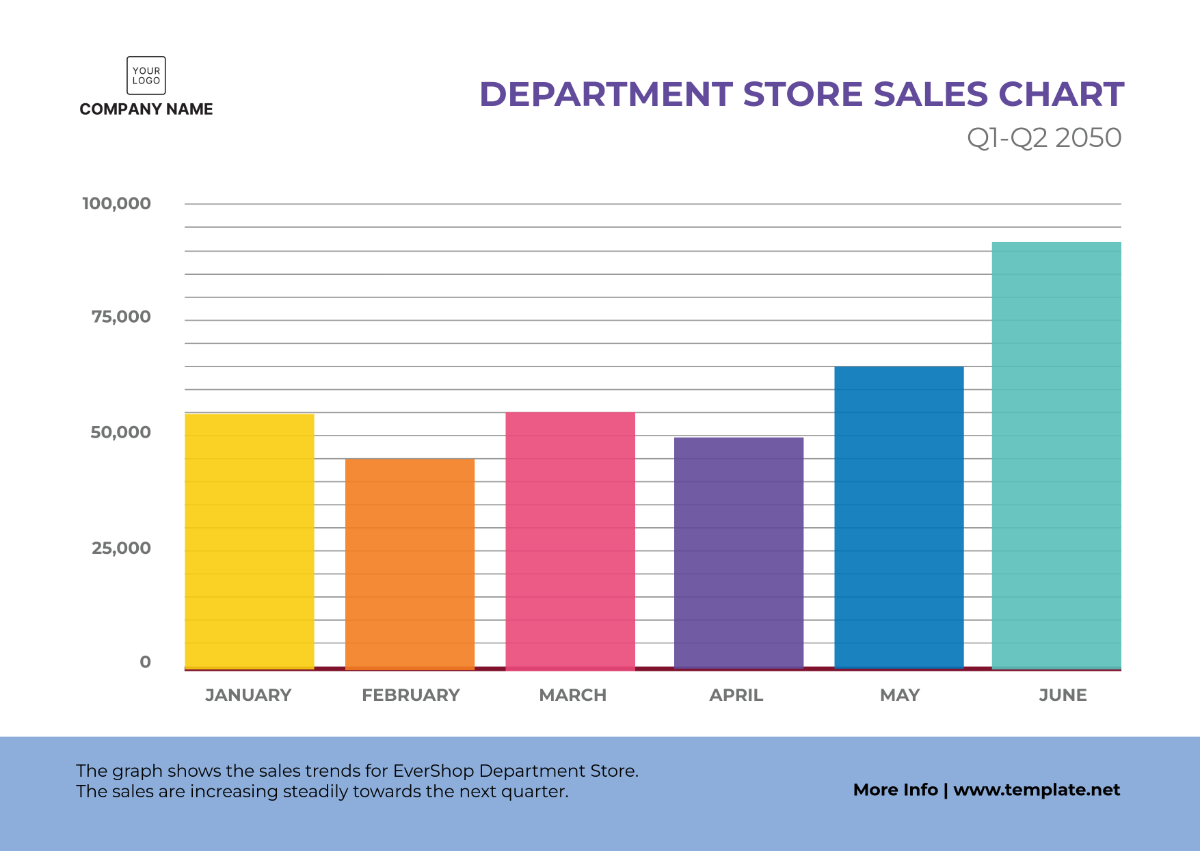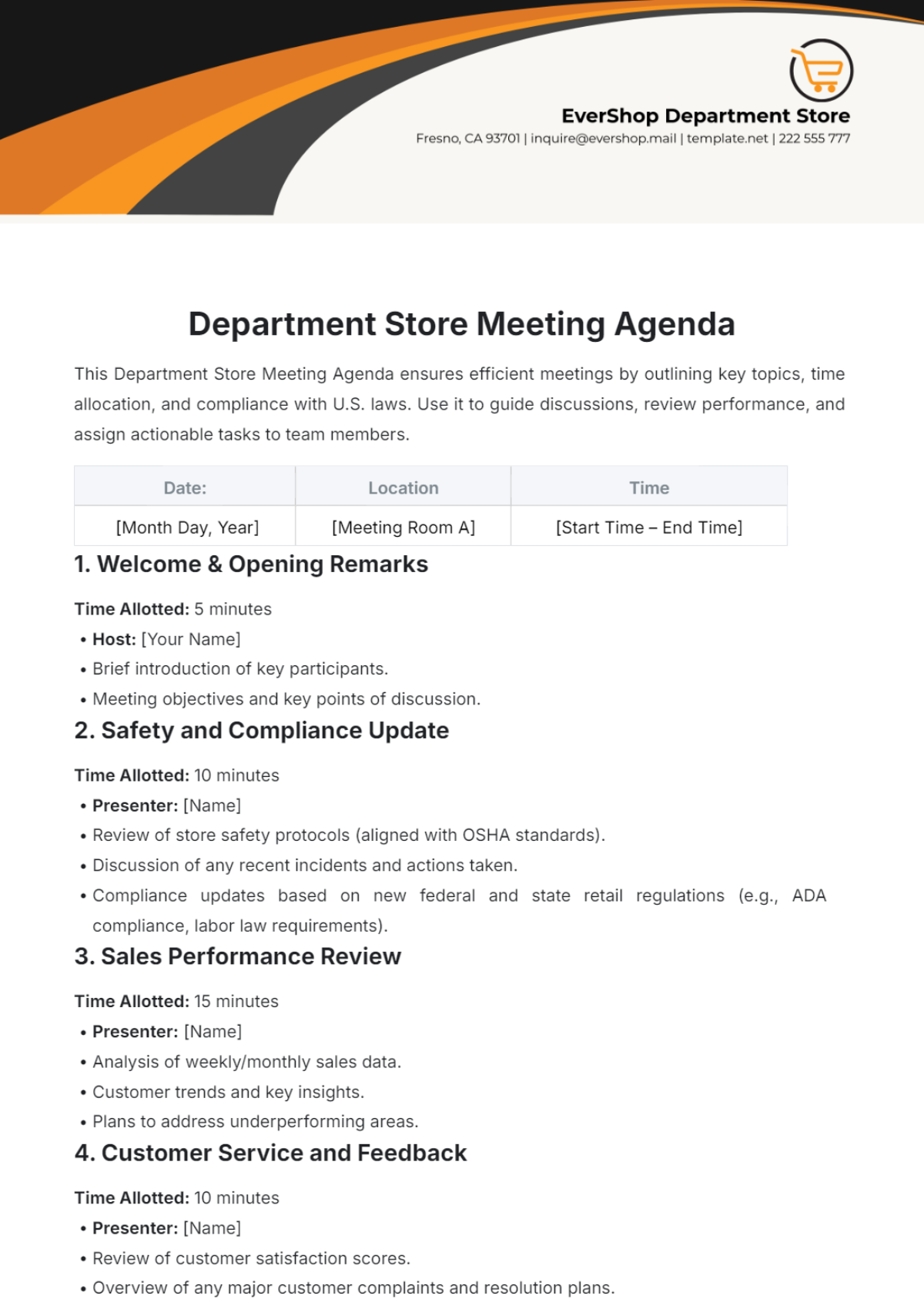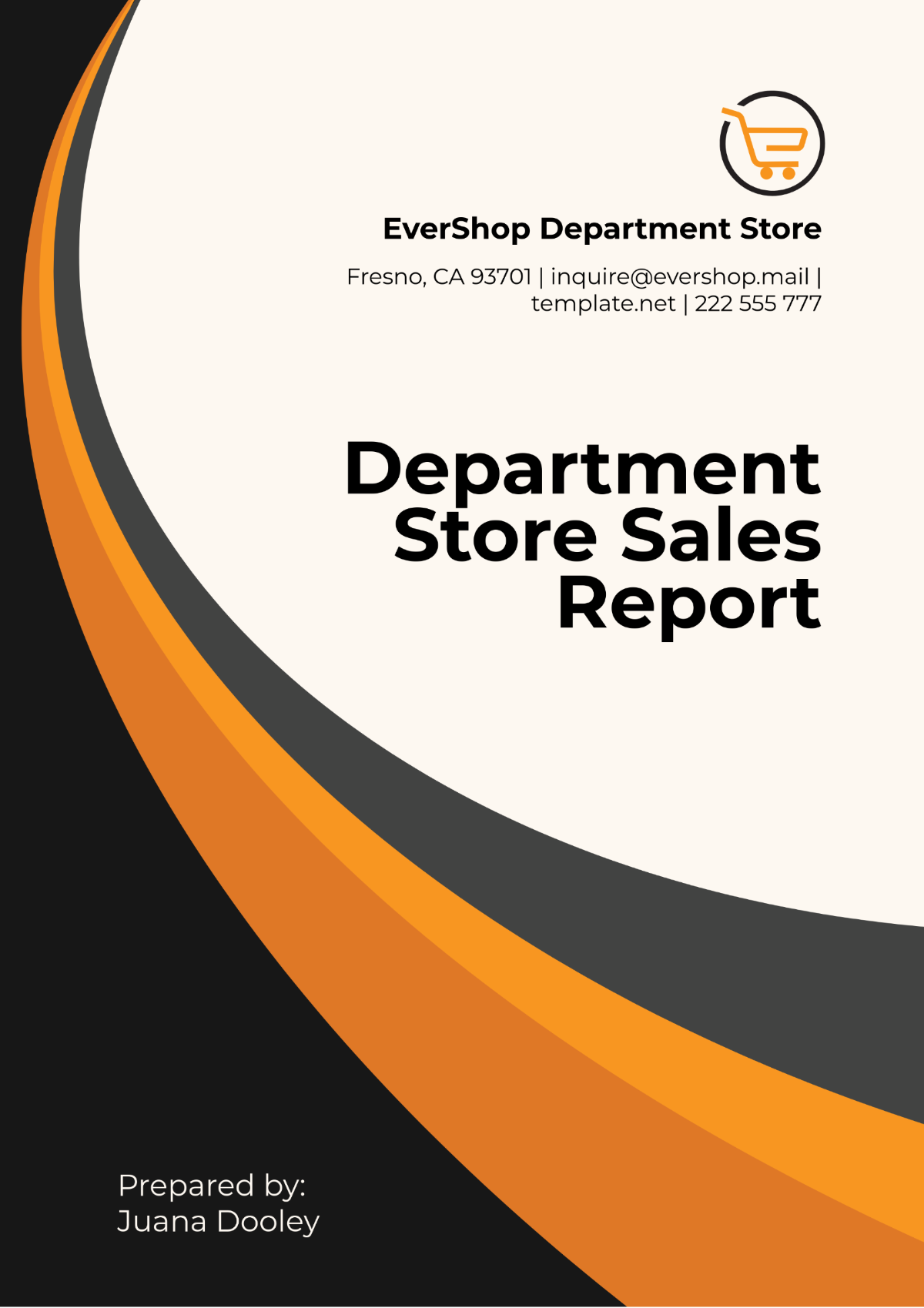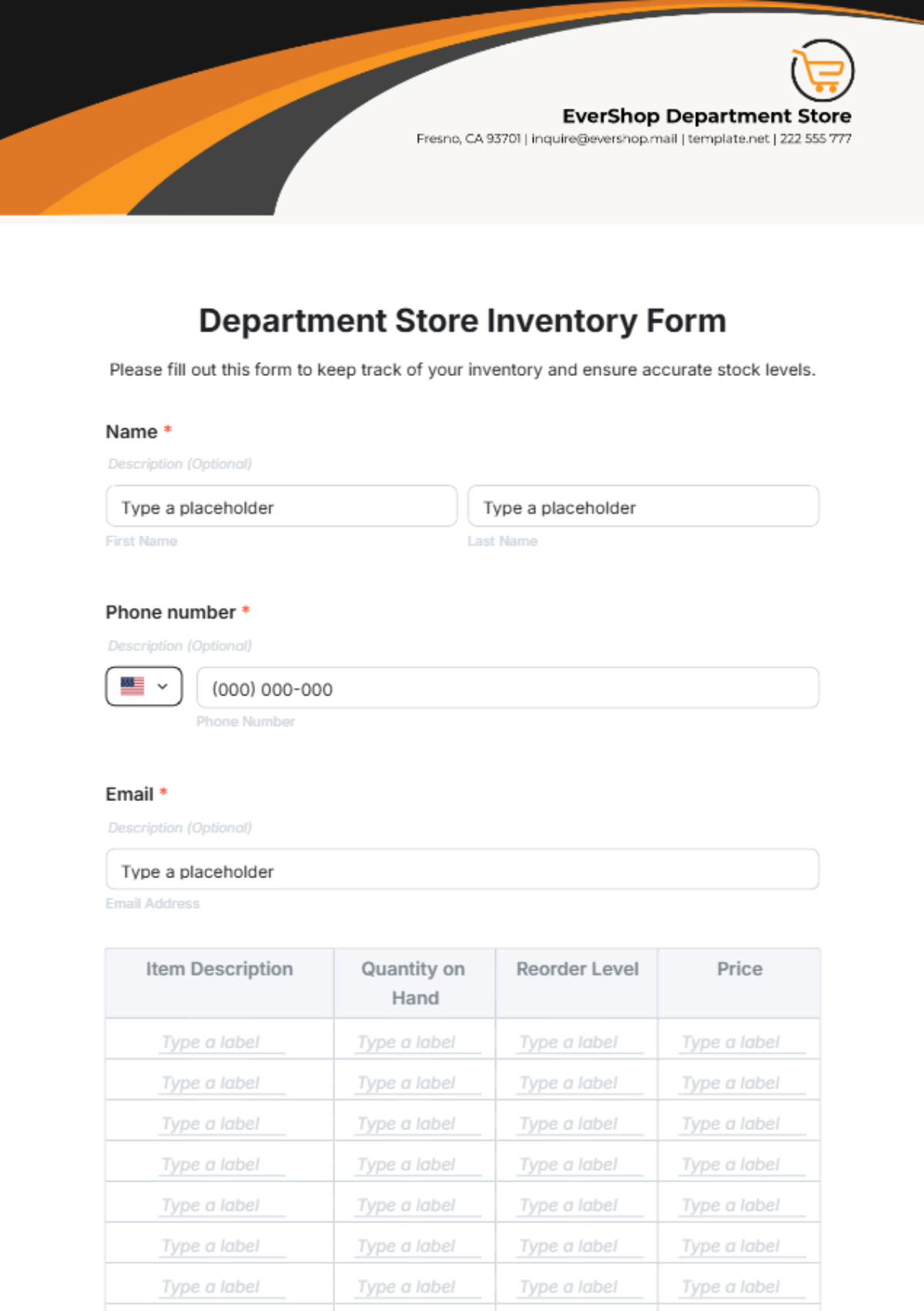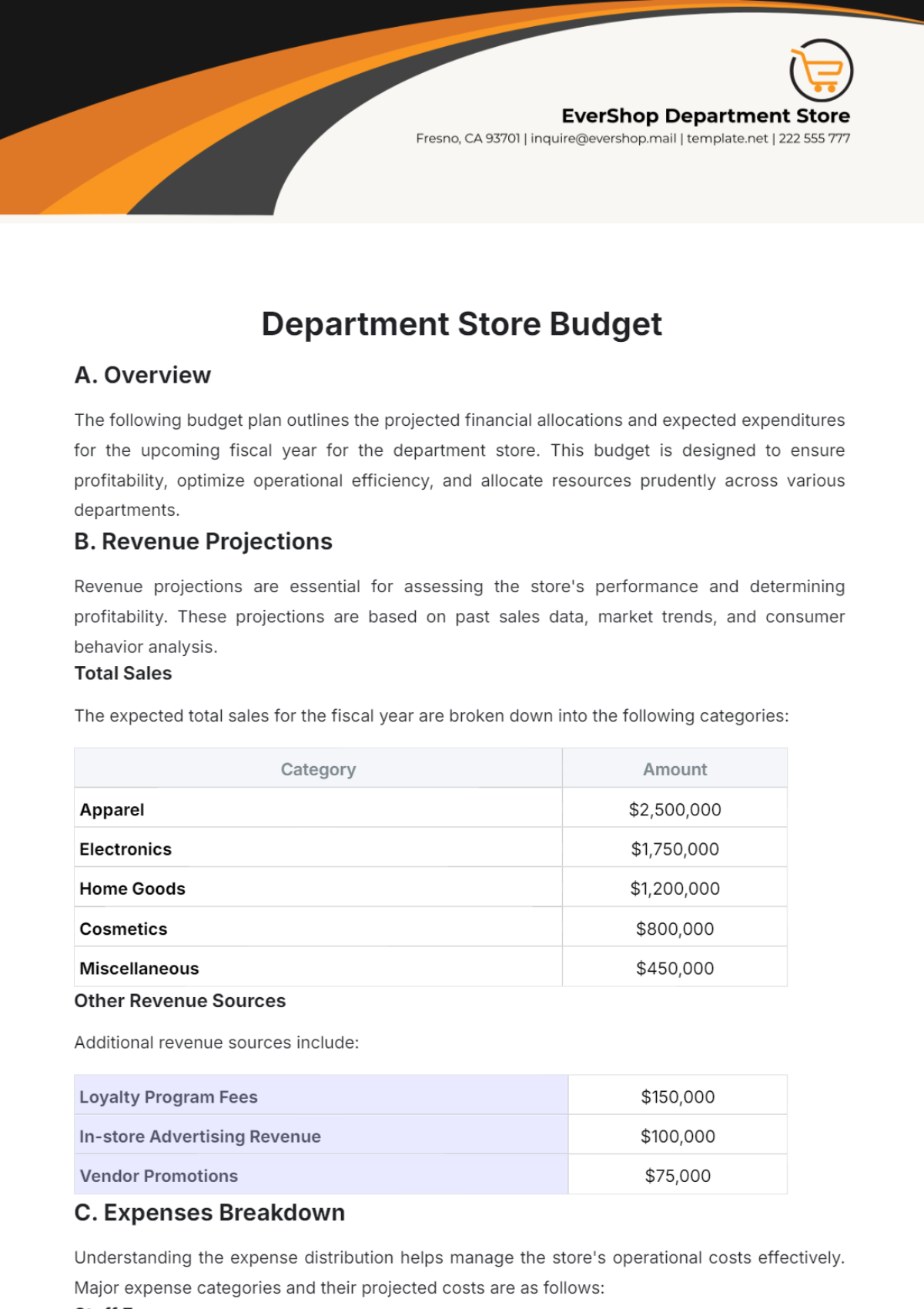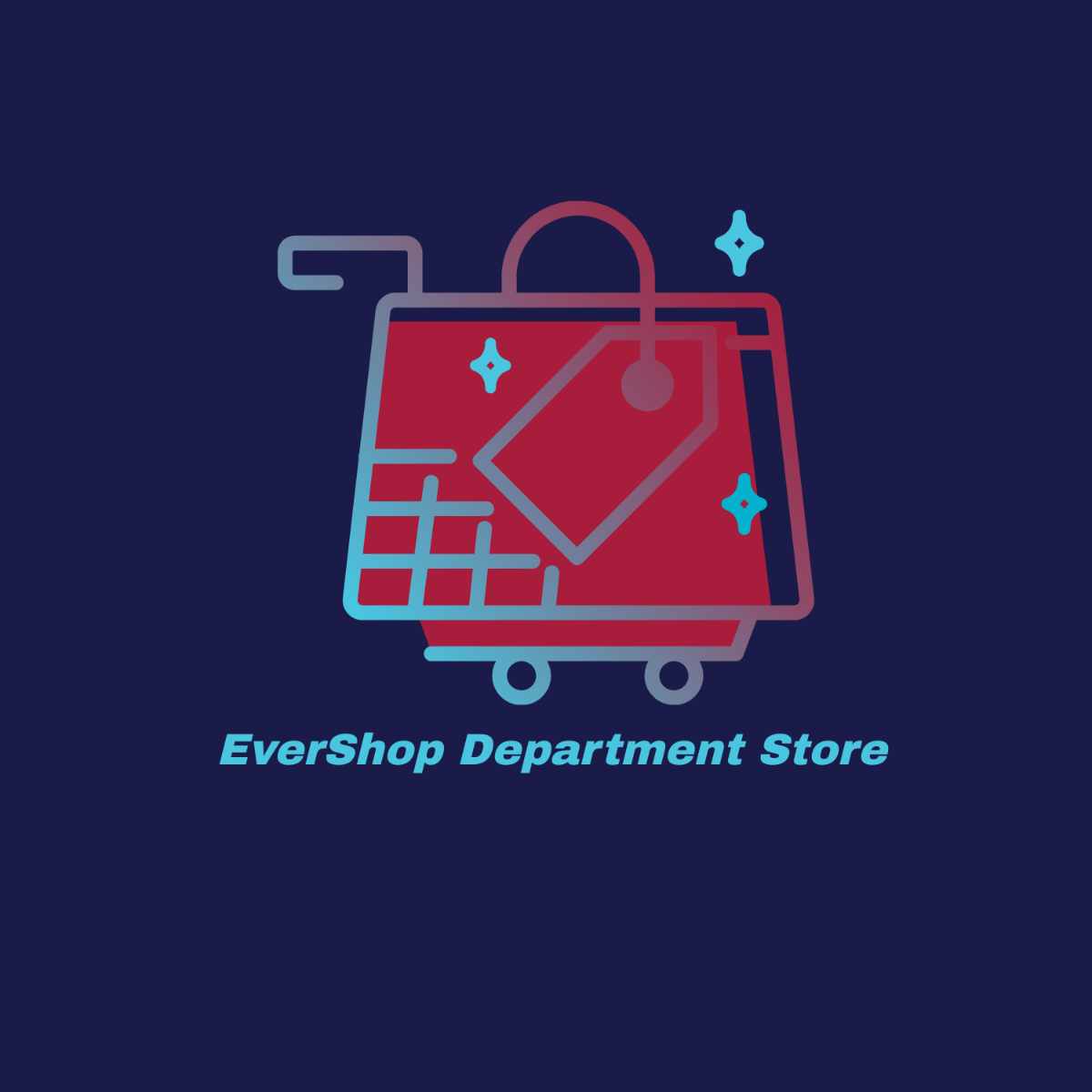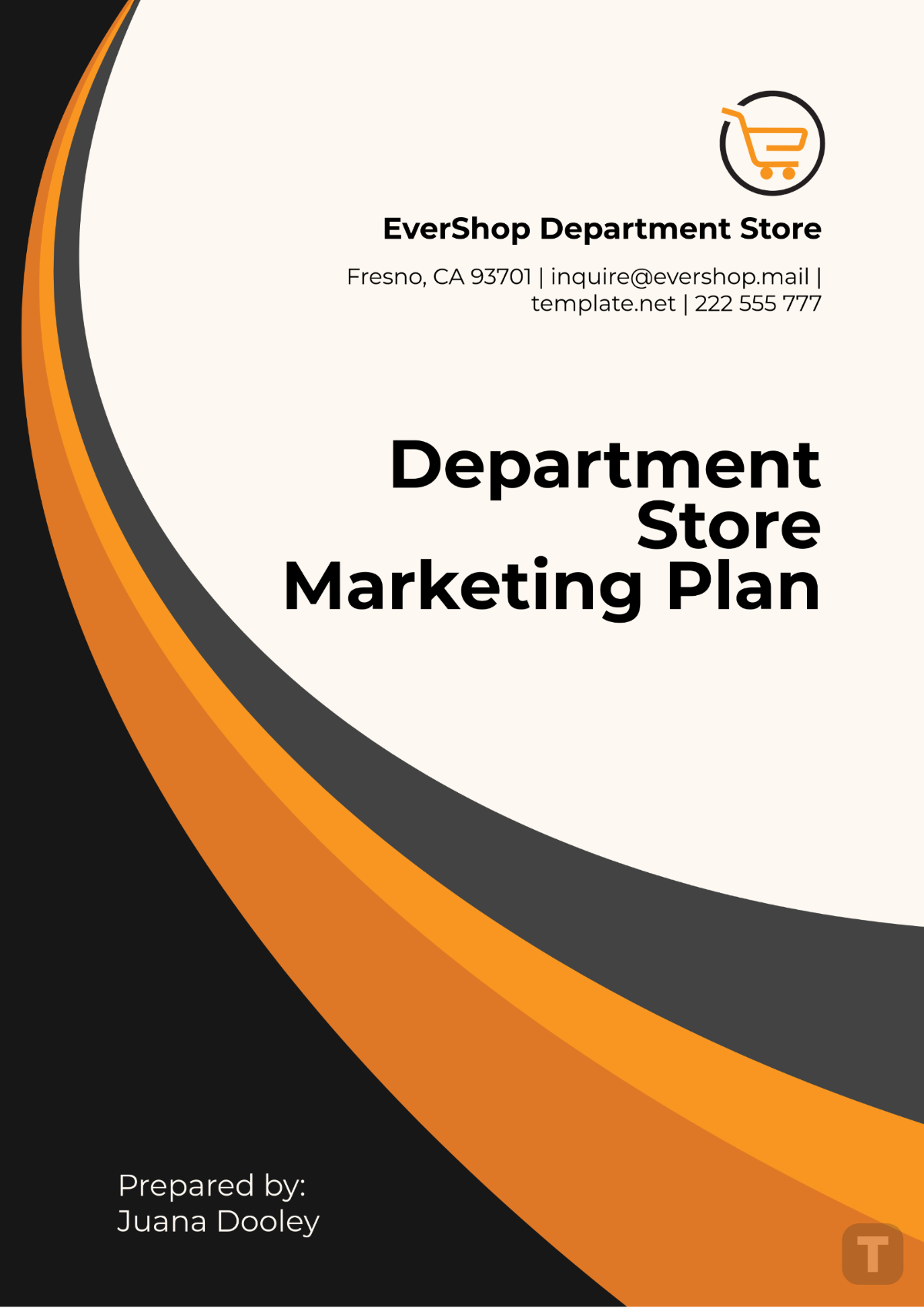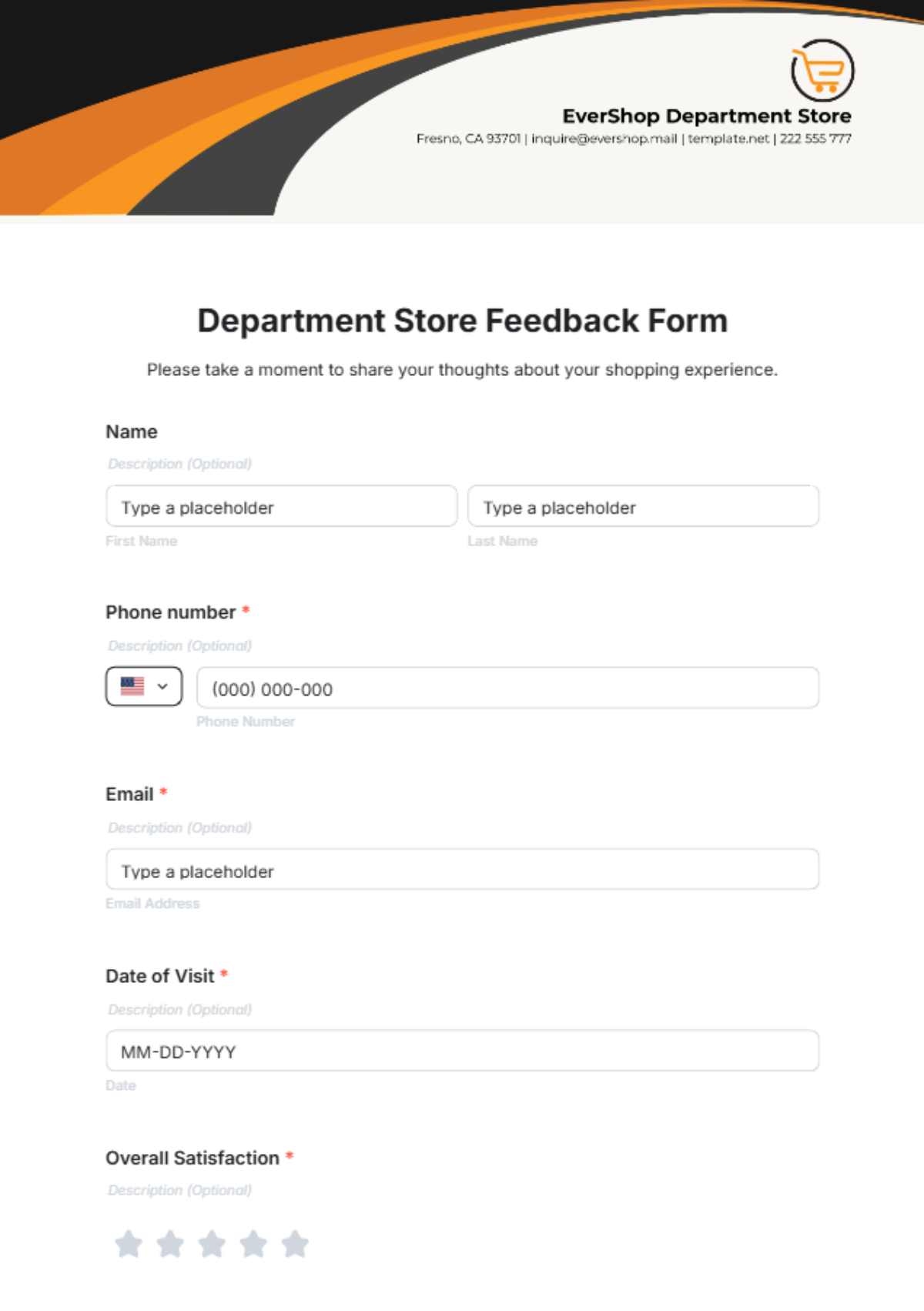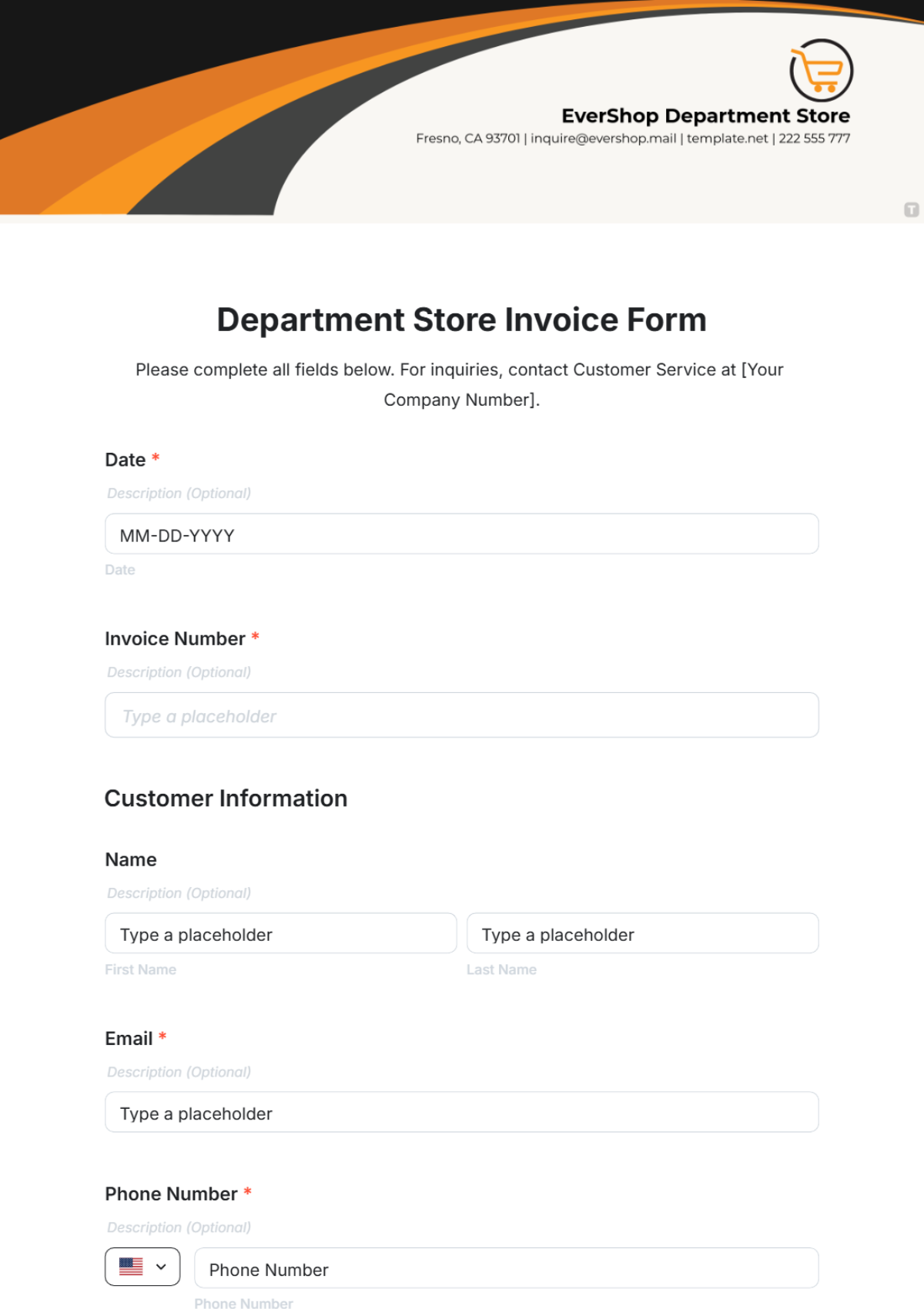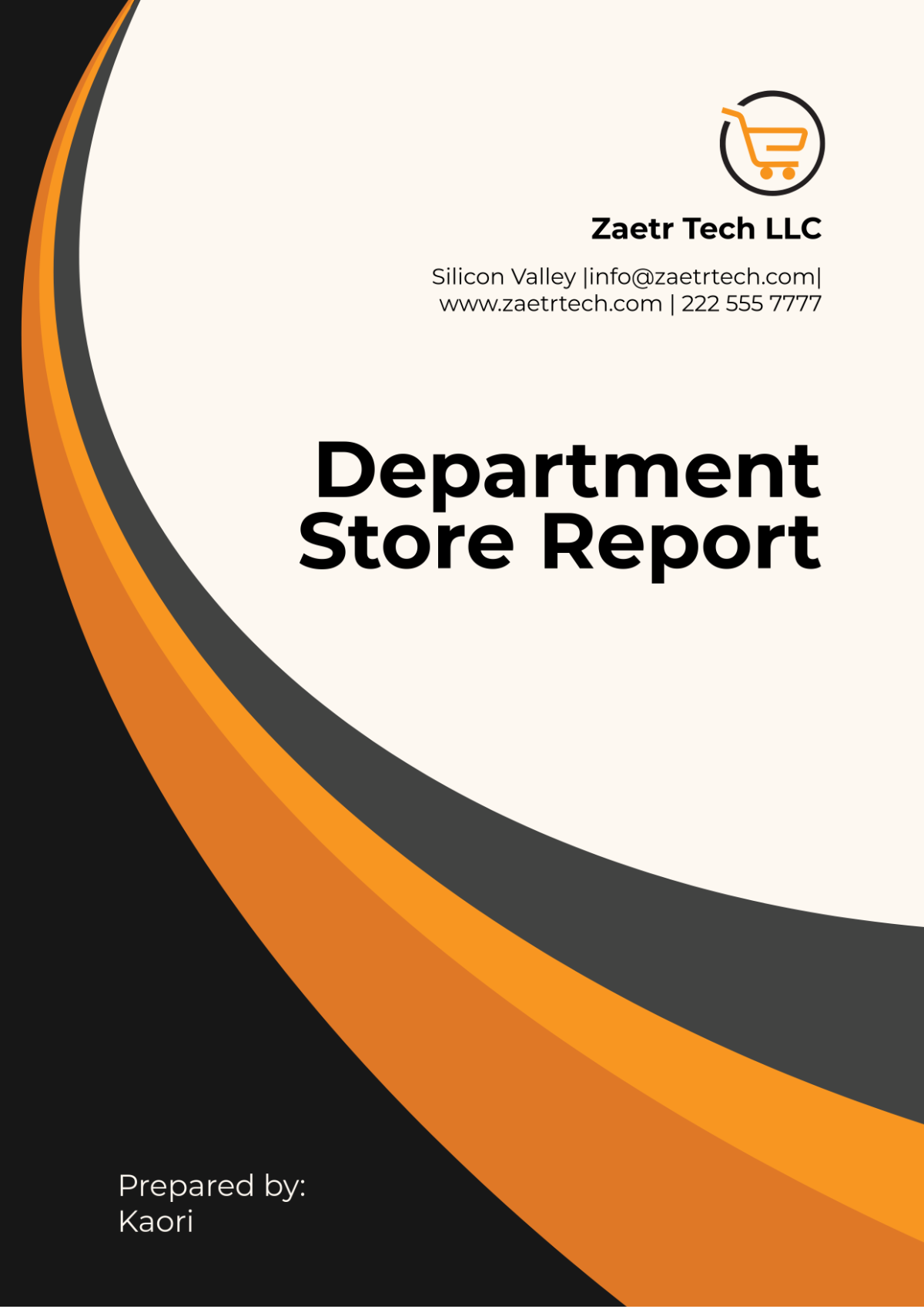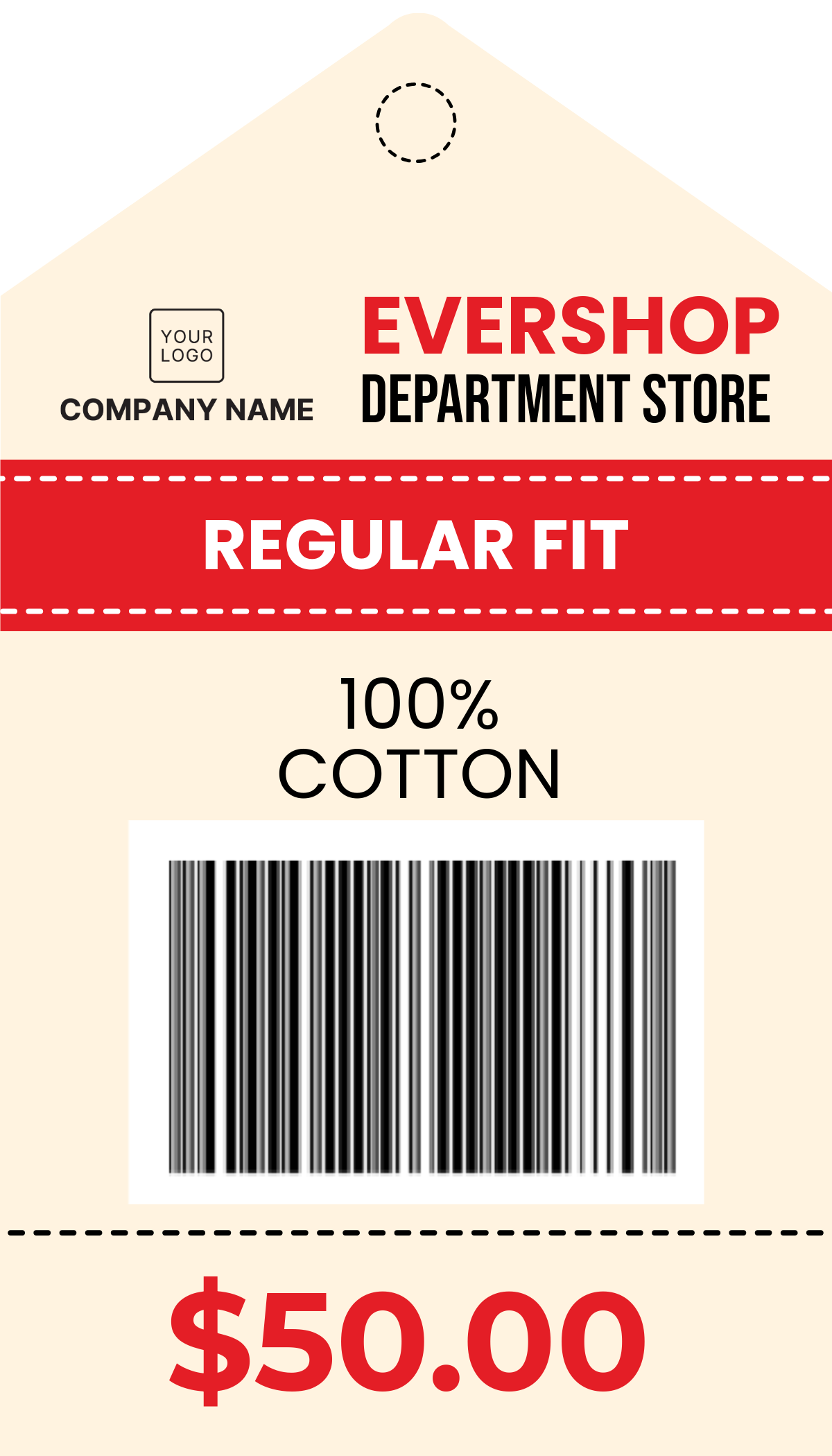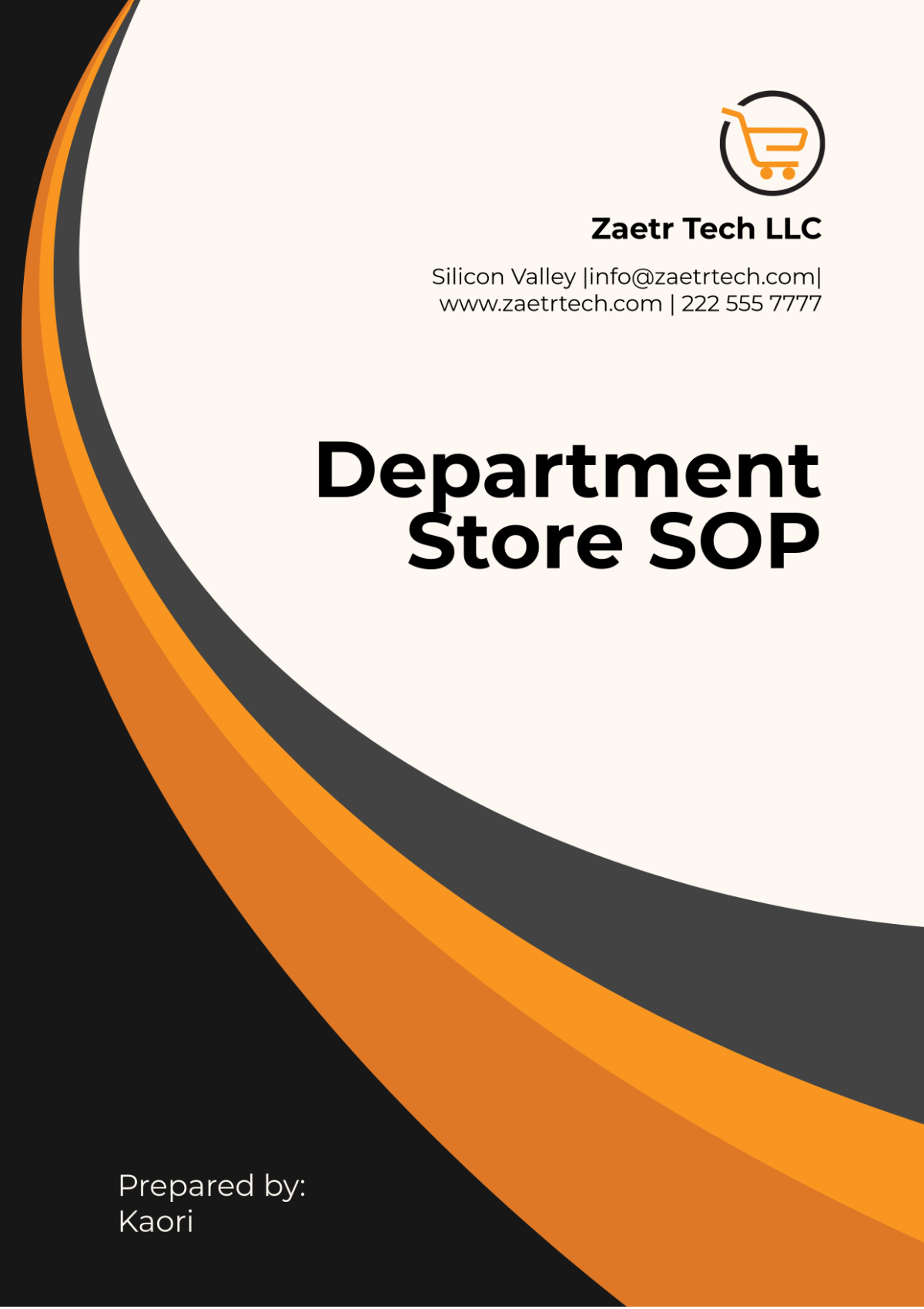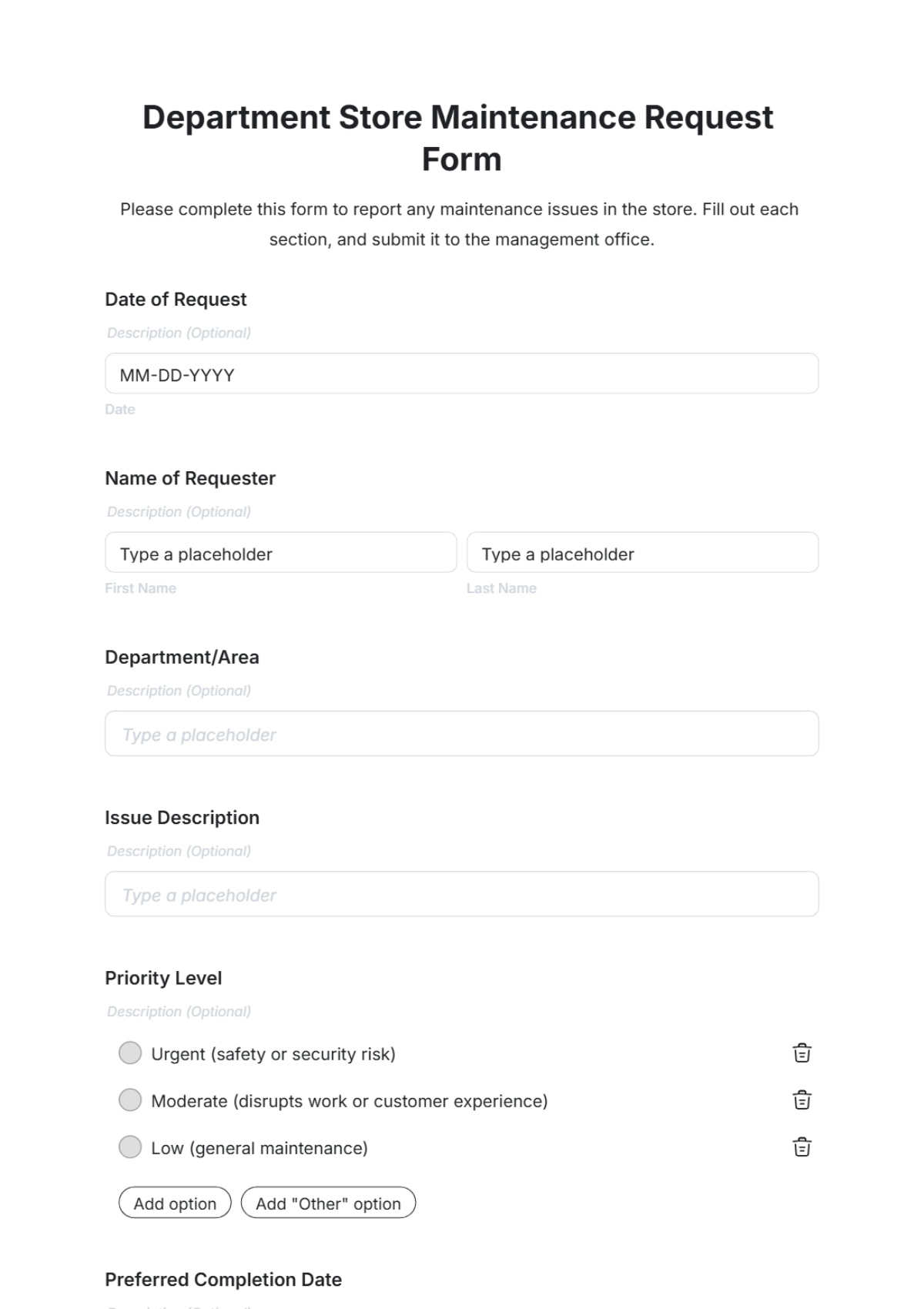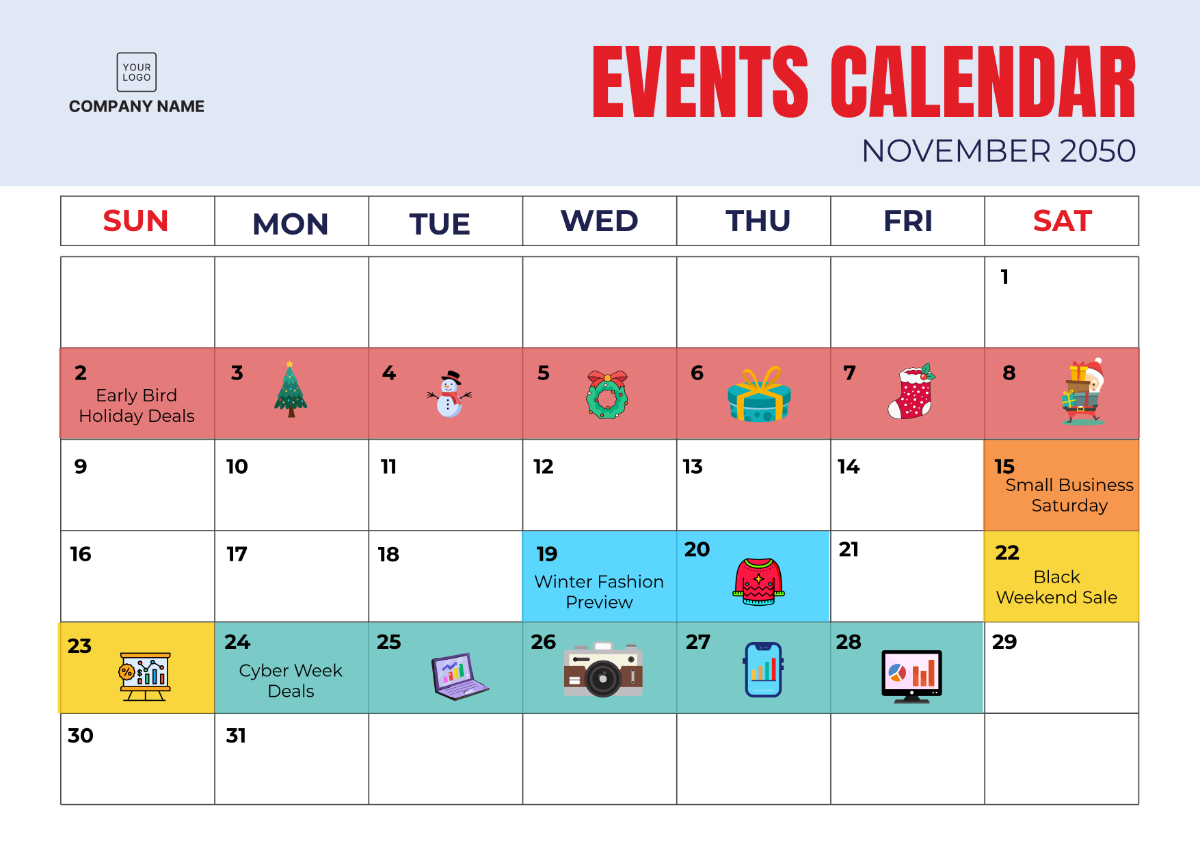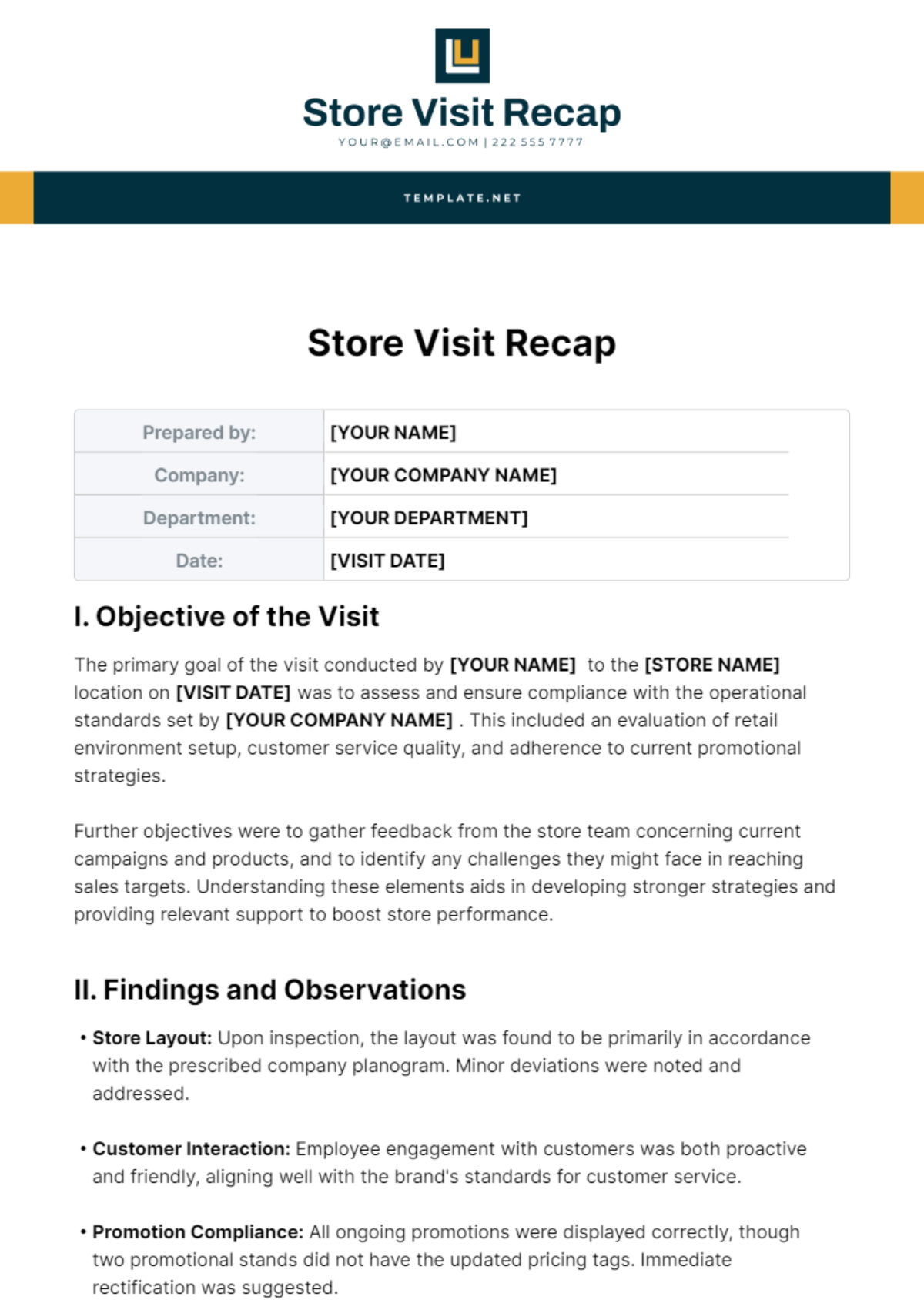Grocery Store Merchandising Guideline
I. Introduction
A. Purpose
Define Merchandising Standards: The purpose of this Grocery Store Merchandising Guideline is to establish clear and comprehensive standards for merchandising in [Your Company Name]. This ensures consistency across all departments and locations.
Enhance Customer Experience: Effective merchandising aims to enhance the shopping experience by making it easier for customers to find products and by creating an appealing store layout.
Increase Sales: By implementing these guidelines, we aim to increase product visibility and sales through strategic placement and attractive displays.
B. Scope
All Departments: These guidelines apply to all departments within the grocery store, including fresh produce, packaged goods, beverages, and non-food items.
Store Layout and Displays: These guidelines cover all aspects of store layout, including aisle arrangement, shelf stocking, and promotional displays.
Employee Responsibilities: This document outlines the roles and responsibilities of employees in maintaining merchandising standards.
C. Target Audience
Store Managers: Responsible for overseeing the implementation of these guidelines and ensuring compliance within their stores.
Department Heads: Ensure that their specific departments adhere to the merchandising standards.
Store Employees: Follow the guidelines for product placement, shelf stocking, and maintaining displays.
II. Store Layout
The following table provides an overview of the key elements of the store layout:
No. | Element | Description |
|---|---|---|
1 | Aisle Arrangement | Organize aisles to maximize space and ease of navigation. |
2 | Shelf Stocking | Place products at eye level to increase visibility and sales. |
3 | End Caps | Utilize end caps for high-margin or promotional products. |
4 | Signage | Use clear, informative signage to guide customers and highlight promotions. |
5 | Flow of Traffic | Design aisles and displays to direct the flow of customer traffic. |
A. Aisle Arrangement
Maximize Space: Arrange aisles to utilize store space efficiently, allowing for both ample product display and comfortable customer movement.
Ease of Navigation: Ensure aisles are clearly marked and organized in a logical sequence to help customers find products quickly.
Product Grouping: Group similar or related products together to facilitate a more intuitive shopping experience.
Accessibility: Ensure that aisles are wide enough to accommodate customers with mobility aids and shopping carts.
Safety: Keep aisles free of clutter to prevent accidents and ensure a safe shopping environment.
B. Shelf Stocking
Eye-Level Placement: Place high-demand and high-margin products at eye level to increase their visibility and sales potential.
Front-Facing Products: Ensure that products are front-facing and fully stocked to create an appealing display.
Product Rotation: Rotate products regularly to maintain freshness and prevent expired items from remaining on shelves.
Category Management: Stock shelves according to category management principles, placing related products together.
Price Labels: Clearly label prices and ensure that all products have visible and accurate price tags.
C. End Caps
Promotional Products: Use end caps to feature promotional products and seasonal items to capture customer attention.
High-Margin Items: Place high-margin products on end caps to increase their visibility and boost sales.
Frequent Updates: Update end cap displays frequently to keep the store looking fresh and engaging.
Cross-Merchandising: Utilize end caps for cross-merchandising by placing complementary products together.
Highlight New Arrivals: Feature new arrivals on end caps to introduce them to customers effectively.
D. Signage
Clear Signage: Use clear and legible signage to guide customers through the store and highlight special offers.
Informative Labels: Provide informative labels for products, including nutritional information and usage tips.
Promotional Signs: Utilize signs to promote sales, discounts, and loyalty programs.
Branding: Ensure signage aligns with the store’s branding and enhances the overall shopping experience.
Directional Signs: Use directional signs to help customers find specific sections and departments easily.
E. Flow of Traffic
Traffic Patterns: Design aisles and displays to create a smooth flow of traffic, minimizing bottlenecks and congestion.
Entrance Displays: Place attractive displays near the entrance to draw customers into the store and set the tone for their shopping experience.
Impulse Buys: Position impulse buy items near the checkout area to increase last-minute sales.
Seasonal Displays: Change displays seasonally to keep the store looking fresh and relevant.
Customer Pathways: Ensure that pathways are clear and well-lit to provide a comfortable shopping environment.
III. Product Placement Strategy
The following table outlines the key strategies for product placement to optimize sales and enhance the shopping experience:
No. | Strategy | Description |
|---|---|---|
1 | High Traffic Areas | Place high-demand items in high traffic areas to maximize visibility. |
2 | Seasonal Products | Feature seasonal products prominently to drive timely sales. |
3 | Cross-Merchandising | Place complementary products together to encourage additional purchases. |
4 | Impulse Buys | Position impulse buy items near the checkout area to boost last-minute sales. |
5 | Bulk Items | Place bulk items in dedicated sections to attract bulk buyers. |
A. High Traffic Areas
Strategic Placement: Place high-demand items such as staples and best-sellers in high traffic areas to ensure maximum visibility and accessibility.
Frequent Restocking: Regularly restock these areas to keep shelves full and attract customers.
Promotional Products: Use high traffic areas to feature promotional products and special offers to maximize their exposure.
End Cap Utilization: Utilize end caps in high traffic areas to draw attention to key products and promotions.
Customer Favorites: Position popular items in these areas to create a draw and encourage repeat visits.
B. Seasonal Products
Prominent Display: Feature seasonal products in prominent locations to drive timely sales and capitalize on seasonal demand.
Thematic Displays: Create thematic displays that highlight seasonal items and enhance the shopping experience.
Clear Signage: Use clear and attractive signage to draw attention to seasonal products and promotions.
Frequent Updates: Update seasonal displays regularly to keep them fresh and relevant.
Cross-Promotion: Combine seasonal products with related items to encourage cross-selling and increase sales.
C. Cross-Merchandising
Complementary Products: Place complementary products together to encourage additional purchases and enhance the customer experience.
Thematic Grouping: Create thematic groupings of products that go well together, such as pasta and sauce or bread and cheese.
Impulse Buys: Position cross-merchandised items in strategic locations to prompt impulse buys.
Event-Based Displays: Use cross-merchandising for event-based displays, such as holiday meals or party supplies.
Recipe Ideas: Provide recipe ideas and related products together to inspire customers and drive sales.
D. Impulse Buys
Checkout Area: Position impulse buy items near the checkout area to increase last-minute sales.
Attractive Displays: Use attractive and easy-to-reach displays to showcase impulse buy items.
Low-Price Items: Feature low-priced items that are easy for customers to add to their purchases without much thought.
Variety: Offer a variety of impulse buy items, including snacks, beverages, and small household items.
Seasonal Impulse Buys: Rotate impulse buy items seasonally to keep displays fresh and relevant.
E. Bulk Items
Dedicated Sections: Place bulk items in dedicated sections to attract customers who prefer buying in bulk.
Clear Pricing: Ensure that bulk items have clear and visible pricing to attract budget-conscious shoppers.
Variety of Sizes: Offer a variety of sizes and packages to cater to different customer needs.
Promotional Discounts: Feature bulk items with promotional discounts to encourage larger purchases.
Ease of Access: Ensure bulk items are easily accessible and well-organized to facilitate quick and easy shopping.
IV. Promotional Strategies
The following table outlines the key promotional strategies to be implemented in our grocery store:
No. | Strategy | Description |
|---|---|---|
1 | Weekly Specials | Feature weekly specials to attract customers and drive sales. |
2 | Loyalty Programs | Implement loyalty programs to reward repeat customers. |
3 | Seasonal Promotions | Run seasonal promotions to capitalize on holidays and special events. |
4 | In-Store Demos | Conduct in-store demos to engage customers and promote new products. |
5 | Digital Marketing | Utilize digital marketing to reach a broader audience and promote offers. |
A. Weekly Specials
Attract Customers: Feature weekly specials to attract customers and encourage repeat visits.
Highlight Discounts: Use clear and attractive signage to highlight weekly discounts and offers.
Promote Freshness: Emphasize the freshness of perishable items included in weekly specials.
Cross-Promotions: Pair weekly specials with related products to increase overall sales.
Marketing: Promote weekly specials through flyers, social media, and in-store announcements.
B. Loyalty Programs
Customer Rewards: Implement loyalty programs that reward customers for repeat purchases, fostering customer loyalty.
Exclusive Offers: Provide exclusive offers and discounts to loyalty program members to make them feel valued.
Points System: Use a points system where customers earn points for every purchase, redeemable for discounts or free items.
Easy Enrollment: Make it easy for customers to enroll in the loyalty program through in-store and online options.
Regular Updates: Keep loyalty program members informed of their points balance and upcoming promotions through regular updates.
C. Seasonal Promotions
Holiday Themes: Run promotions themed around holidays and special events to create excitement and drive sales.
Limited-Time Offers: Offer limited-time discounts on seasonal items to encourage quick purchases.
Bundle Deals: Create bundle deals that combine related seasonal products at a discounted price.
Thematic Displays: Set up thematic displays that highlight seasonal promotions and attract customer attention.
Marketing Campaigns: Use marketing campaigns across various channels to promote seasonal offers and increase foot traffic.
D. In-Store Demos
Product Engagement: Conduct in-store demos to engage customers and provide hands-on experience with new products.
Sampling: Offer product samples during demos to entice customers and drive sales.
Scheduled Events: Schedule regular demo events to keep customers interested and coming back.
Educational Content: Provide educational content during demos to inform customers about product benefits and usage.
Customer Feedback: Gather customer feedback during demos to improve future promotions and product offerings.
E. Digital Marketing
Online Presence: Utilize social media and the store's website to promote offers and engage with customers.
Email Campaigns: Send regular email campaigns to inform customers of upcoming promotions and special events.
Social Media Ads: Run targeted social media ads to reach a broader audience and drive traffic to the store.
Influencer Partnerships: Partner with local influencers to promote products and offers to their followers.
Customer Interaction: Engage with customers online by responding to comments and messages promptly.
V. Inventory Management
The following table outlines the key practices for effective inventory management in our grocery store:
No. | Practice | Description |
|---|---|---|
1 | Regular Audits | Conduct regular audits to maintain accurate inventory records. |
2 | Stock Rotation | Implement stock rotation to ensure freshness and minimize waste. |
3 | Reorder Points | Establish reorder points to maintain optimal stock levels. |
4 | Supplier Relations | Maintain strong relationships with suppliers for reliable stock replenishment. |
5 | Technology Use | Utilize technology for efficient inventory tracking and management. |
A. Regular Audits
Frequency: Conduct regular inventory audits to ensure accurate records and identify discrepancies.
Procedure: Follow a standardized procedure for counting and recording inventory.
Discrepancy Resolution: Investigate and resolve any discrepancies found during audits promptly.
Documentation: Keep detailed records of all audits and any actions taken to address discrepancies.
Audit Team: Designate a team responsible for conducting inventory audits and ensuring accuracy.
B. Stock Rotation
FIFO Method: Implement the First-In-First-Out (FIFO) method to ensure older stock is sold before newer stock.
Expiration Dates: Regularly check expiration dates and rotate stock to prevent selling expired items.
Training: Train employees on proper stock rotation practices to maintain product freshness.
Monitoring: Monitor stock rotation regularly to ensure compliance and address any issues.
Documentation: Keep records of stock rotation activities and any actions taken to address issues.
C. Reorder Points
Establish Thresholds: Establish reorder points for each product to maintain optimal stock levels.
Automatic Alerts: Set up automatic alerts to notify when stock levels reach reorder points.
Supplier Coordination: Coordinate with suppliers to ensure timely replenishment of stock.
Safety Stock: Maintain safety stock levels to prevent stockouts during high demand periods.
Review and Adjust: Regularly review and adjust reorder points based on sales trends and seasonal demand.
D. Supplier Relations
Reliable Suppliers: Build and maintain strong relationships with reliable suppliers for consistent stock replenishment.
Communication: Maintain open communication with suppliers to address any issues or changes in demand.
Negotiation: Negotiate favorable terms and conditions with suppliers to ensure cost-effectiveness.
Quality Control: Implement quality control measures to ensure that all products meet store standards.
Diverse Suppliers: Establish relationships with multiple suppliers to mitigate risk and ensure a diverse product range.
E. Technology Use
Inventory Software: Utilize inventory management software to track stock levels and streamline operations.
Barcode Scanning: Implement barcode scanning for efficient and accurate inventory tracking.
Automated Reordering: Use automated reordering systems to maintain optimal stock levels.
Data Analysis: Analyze inventory data to identify trends and make informed decisions.
Training: Train employees on the use of technology for inventory management to ensure efficiency and accuracy.
VI. Pricing Strategy
The following table outlines the key components of our pricing strategy to ensure competitive and profitable pricing:
No. | Component | Description |
|---|---|---|
1 | Competitive Pricing | Monitor competitors' prices to remain competitive. |
2 | Dynamic Pricing | Adjust prices based on demand, seasonality, and market conditions. |
3 | Value Pricing | Offer value pricing on staple items to attract budget-conscious customers. |
4 | Premium Pricing | Implement premium pricing for high-quality or specialty items. |
5 | Promotional Pricing | Use promotional pricing to drive sales during specific periods. |
A. Competitive Pricing
Market Research: Conduct regular market research to monitor competitors' prices and ensure our pricing remains competitive.
Price Matching: Implement price matching policies to attract customers who are price-sensitive.
Competitive Analysis: Analyze competitors' pricing strategies to identify opportunities for differentiation.
Customer Perception: Consider customer perception of value when setting prices to ensure competitiveness.
Regular Updates: Regularly update prices based on market research and competitive analysis.
B. Dynamic Pricing
Demand Analysis: Adjust prices based on demand patterns and sales trends to maximize profitability.
Seasonal Adjustments: Implement seasonal price adjustments to reflect changes in demand and supply.
Real-Time Data: Use real-time data to make informed pricing decisions and respond quickly to market changes.
Algorithmic Pricing: Utilize algorithmic pricing tools to automate and optimize price adjustments.
Flexibility: Maintain flexibility in pricing to respond to unexpected changes in the market.
C. Value Pricing
Staple Items: Offer value pricing on staple items such as bread, milk, and eggs to attract budget-conscious customers.
Perceived Value: Ensure that value-priced items maintain a perception of quality and value.
Volume Discounts: Provide volume discounts on value-priced items to encourage larger purchases.
Marketing: Promote value pricing through marketing campaigns to attract price-sensitive customers.
Customer Loyalty: Use value pricing to build customer loyalty and encourage repeat visits.
D. Premium Pricing
Quality Products: Implement premium pricing for high-quality or specialty items that justify higher prices.
Brand Positioning: Position premium-priced products as high-end or exclusive to attract discerning customers.
Packaging: Use premium packaging to enhance the perceived value of premium-priced products.
Limited Availability: Highlight the limited availability of premium products to create a sense of exclusivity.
Target Market: Identify and target specific customer segments who are willing to pay premium prices.
E. Promotional Pricing
Limited-Time Offers: Use limited-time promotional pricing to create urgency and drive sales.
Seasonal Promotions: Implement promotional pricing during holidays and special events to boost sales.
Bundled Deals: Offer bundled deals that combine multiple products at a discounted price.
Clearance Sales: Use clearance sales to move out slow-moving or seasonal inventory.
Marketing: Promote promotional pricing through various marketing channels to maximize reach and impact.
VII. Customer Service
The following table outlines the key components of our customer service strategy to ensure a positive shopping experience:
No. | Component | Description |
|---|---|---|
1 | Staff Training | Provide comprehensive training to staff on customer service standards. |
2 | Customer Feedback | Implement systems to gather and act on customer feedback. |
3 | Complaint Resolution | Establish a clear process for resolving customer complaints. |
4 | Personalization | Offer personalized service to enhance the customer experience. |
5 | Loyalty Programs | Develop loyalty programs to reward repeat customers and foster loyalty. |
A. Staff Training
Comprehensive Training: Provide comprehensive training to staff on customer service standards and expectations.
Regular Refreshers: Conduct regular refresher training sessions to reinforce customer service skills.
Role-Playing: Use role-playing exercises to help staff practice and improve their customer service interactions.
Customer Interaction: Train staff on effective customer interaction techniques to ensure a positive experience.
Knowledge Sharing: Encourage knowledge sharing among staff to improve service quality and consistency.
B. Customer Feedback
Feedback Systems: Implement systems to gather customer feedback through surveys, comment cards, and online reviews.
Actionable Insights: Analyze feedback to identify actionable insights and areas for improvement.
Prompt Response: Respond promptly to customer feedback to show that their input is valued.
Continuous Improvement: Use feedback to drive continuous improvement in customer service and store operations.
Customer Engagement: Engage with customers through social media and other channels to gather feedback and build relationships.
C. Complaint Resolution
Clear Process: Establish a clear process for resolving customer complaints quickly and effectively.
Empower Staff: Empower staff to resolve complaints at the point of contact to enhance customer satisfaction.
Documentation: Keep detailed records of complaints and resolutions to identify trends and prevent recurring issues.
Customer Follow-Up: Follow up with customers after resolving complaints to ensure their satisfaction.
Continuous Training: Provide continuous training to staff on complaint resolution techniques and best practices.
D. Personalization
Customer Preferences: Gather and utilize customer preferences to offer personalized service and recommendations.
Loyalty Data: Use data from loyalty programs to tailor offers and promotions to individual customers.
Personalized Communication: Communicate with customers in a personalized manner through email, text, and in-store interactions.
Customer Profiles: Maintain detailed customer profiles to understand their needs and preferences better.
VIP Programs: Develop VIP programs for loyal customers to provide exclusive offers and personalized service.
E. Loyalty Programs
Rewards System: Develop a rewards system that offers points or discounts for repeat purchases.
Exclusive Offers: Provide exclusive offers and discounts to loyalty program members.
Easy Enrollment: Make it easy for customers to enroll in the loyalty program through in-store and online options.
Regular Updates: Keep loyalty program members informed of their points balance and upcoming promotions.
Customer Engagement: Engage loyalty program members through personalized communication and special events.
VIII. Store Maintenance
The following table outlines the key practices for maintaining a clean and organized store environment:
No. | Practice | Description |
|---|---|---|
1 | Daily Cleaning | Conduct daily cleaning to maintain a clean and hygienic store. |
2 | Regular Inspections | Perform regular inspections to identify and address maintenance issues. |
3 | Stock Organization | Keep stock organized and shelves well-stocked to ensure an orderly store. |
4 | Safety Protocols | Implement safety protocols to ensure a safe shopping environment. |
5 | Staff Training | Train staff on store maintenance procedures and safety protocols. |
A. Daily Cleaning
Cleaning Schedule: Establish a daily cleaning schedule to ensure all areas of the store are regularly cleaned.
High-Traffic Areas: Focus on high-traffic areas such as entrances, checkout counters, and restrooms.
Hygiene Standards: Maintain high hygiene standards in food handling and preparation areas.
Trash Disposal: Ensure regular trash disposal to maintain cleanliness and prevent odors.
Cleaning Supplies: Keep cleaning supplies well-stocked and easily accessible to staff.
B. Regular Inspections
Inspection Schedule: Perform regular inspections to identify and address maintenance issues promptly.
Checklists: Use checklists to ensure all areas are thoroughly inspected and any issues are documented.
Repairs: Address maintenance issues such as broken fixtures, lighting, and equipment promptly.
Pest Control: Implement pest control measures to prevent infestations and maintain a clean environment.
Record Keeping: Keep detailed records of inspections and maintenance activities for accountability.
C. Stock Organization
Shelf Organization: Keep shelves well-stocked and organized to create an orderly shopping environment.
Product Placement: Ensure products are placed correctly and labels are clearly visible to customers.
Restocking: Regularly restock shelves to prevent empty spaces and maintain a full and inviting appearance.
Inventory Checks: Conduct regular inventory checks to ensure stock levels are accurate and products are in the right place.
Customer Accessibility: Arrange products in a way that makes them easily accessible to customers.
D. Safety Protocols
Safety Training: Train staff on safety protocols to ensure a safe shopping environment for customers and employees.
Emergency Procedures: Establish and communicate emergency procedures for situations such as fires, medical emergencies, and natural disasters.
Signage: Use clear signage to indicate safety measures such as wet floors, emergency exits, and first aid stations.
Equipment Maintenance: Regularly maintain and inspect safety equipment such as fire extinguishers and first aid kits.
Incident Reporting: Implement a system for reporting and addressing safety incidents promptly.
E. Staff Training
Maintenance Procedures: Train staff on store maintenance procedures to ensure consistency and high standards.
Hygiene Practices: Educate staff on proper hygiene practices, especially in food handling and preparation areas.
Customer Service: Incorporate store maintenance training into overall customer service training to emphasize its importance.
Monitoring Compliance: Monitor staff compliance with maintenance procedures and provide feedback and additional training as needed.
Continuous Improvement: Encourage continuous improvement in store maintenance practices through regular training and feedback.
IX. Financial Management
The following table outlines the key components of our financial management strategy to ensure profitability and sustainable growth:
No. | Component | Description |
|---|---|---|
1 | Budgeting | Develop and adhere to a comprehensive budget for store operations. |
2 | Cost Control | Implement cost control measures to manage expenses and maximize profitability. |
3 | Revenue Tracking | Track revenue and sales data to monitor performance and identify trends. |
4 | Financial Reporting | Generate regular financial reports for informed decision-making. |
5 | Cash Flow Management | Manage cash flow to ensure sufficient liquidity for operations and growth. |
A. Budgeting
Comprehensive Budget: Develop a comprehensive budget that covers all aspects of store operations, including staffing, inventory, marketing, and maintenance.
Regular Review: Regularly review and update the budget to reflect changes in revenue and expenses.
Expense Allocation: Allocate expenses appropriately to ensure efficient use of resources and control costs.
Variance Analysis: Conduct variance analysis to compare actual performance against the budget and identify areas for improvement.
Budget Adjustments: Make necessary adjustments to the budget based on performance analysis and changing market conditions.
B. Cost Control
Expense Monitoring: Monitor expenses regularly to identify and control unnecessary costs.
Supplier Negotiation: Negotiate with suppliers to secure favorable terms and pricing to reduce costs.
Operational Efficiency: Implement measures to improve operational efficiency and reduce waste.
Staffing Levels: Optimize staffing levels to balance labor costs with service quality.
Cost-Benefit Analysis: Conduct cost-benefit analysis for major expenditures to ensure they provide value for money.
C. Revenue Tracking
Sales Data: Track sales data regularly to monitor performance and identify trends and opportunities.
Revenue Targets: Set revenue targets and track progress towards achieving them.
Product Performance: Analyze product performance to identify top-selling items and areas for improvement.
Customer Segmentation: Segment customers based on purchasing behavior to tailor marketing and sales strategies.
Reporting Tools: Use reporting tools and software to automate revenue tracking and generate insights.
D. Financial Reporting
Regular Reports: Generate regular financial reports, including profit and loss statements, balance sheets, and cash flow statements.
Key Metrics: Monitor key financial metrics such as gross margin, net profit margin, and return on investment.
Trend Analysis: Conduct trend analysis to identify patterns and make informed financial decisions.
Performance Review: Review financial performance regularly with the management team to assess progress and make strategic decisions.
Compliance: Ensure compliance with financial regulations and accounting standards in all reporting practices.
E. Cash Flow Management
Cash Flow Projections: Develop cash flow projections to anticipate future cash needs and plan accordingly.
Liquidity Management: Maintain sufficient liquidity to cover operational expenses and invest in growth opportunities.
Accounts Receivable: Manage accounts receivable effectively to ensure timely collection of payments.
Expense Timing: Optimize the timing of expenses to align with cash inflows and maintain positive cash flow.
Emergency Funds: Set aside emergency funds to cover unexpected expenses and ensure financial stability.
X. Community Engagement
The following table outlines the key practices for engaging with the local community and building strong relationships:
No. | Practice | Description |
|---|---|---|
1 | Local Partnerships | Build partnerships with local businesses and organizations. |
2 | Community Events | Participate in and sponsor community events to build relationships. |
3 | Charitable Initiatives | Support charitable initiatives and local causes. |
4 | Customer Involvement | Involve customers in community engagement activities. |
5 | Social Media Presence | Maintain an active social media presence to connect with the community. |
A. Local Partnerships
Business Partnerships: Build partnerships with local businesses to support each other and strengthen the community.
Supplier Relationships: Develop relationships with local suppliers to source fresh and locally-produced goods.
Collaborative Marketing: Collaborate with local businesses on marketing initiatives and promotions.
Community Organizations: Partner with community organizations to support local causes and initiatives.
Networking: Participate in local business networking events to build relationships and identify partnership opportunities.
B. Community Events
Event Participation: Participate in local community events to build relationships and raise awareness of our store.
Event Sponsorship: Sponsor community events to show our support and enhance our visibility.
In-Store Events: Host in-store events such as cooking demonstrations, tastings, and workshops to engage with customers.
Holiday Celebrations: Celebrate local holidays and festivals with special events and promotions.
Customer Appreciation: Organize customer appreciation events to thank our customers and build loyalty.
C. Charitable Initiatives
Donations: Support local charities and causes through donations and sponsorships.
Volunteer Programs: Encourage staff to participate in volunteer programs and community service activities.
Fundraising: Organize fundraising events to support local charities and causes.
Charity Partnerships: Partner with local charities to support their initiatives and raise awareness.
In-Kind Contributions: Provide in-kind contributions such as food donations to local shelters and food banks.
D. Customer Involvement
Feedback and Suggestions: Encourage customers to provide feedback and suggestions for community engagement activities.
Customer Participation: Involve customers in community events and initiatives through volunteer opportunities and promotions.
Loyalty Programs: Incorporate community engagement activities into loyalty programs to encourage customer participation.
Community Boards: Use in-store community boards to promote local events and causes.
Customer Recognition: Recognize and celebrate customers who contribute to the community through special promotions and rewards.
E. Social Media Presence
Active Engagement: Maintain an active social media presence to connect with the community and share updates.
Content Sharing: Share content related to local events, partnerships, and charitable initiatives.
Customer Interaction: Engage with customers on social media by responding to comments and messages.
Community Highlights: Highlight local businesses, events, and causes on our social media channels.
Campaigns: Run social media campaigns to promote community engagement activities and encourage participation.


